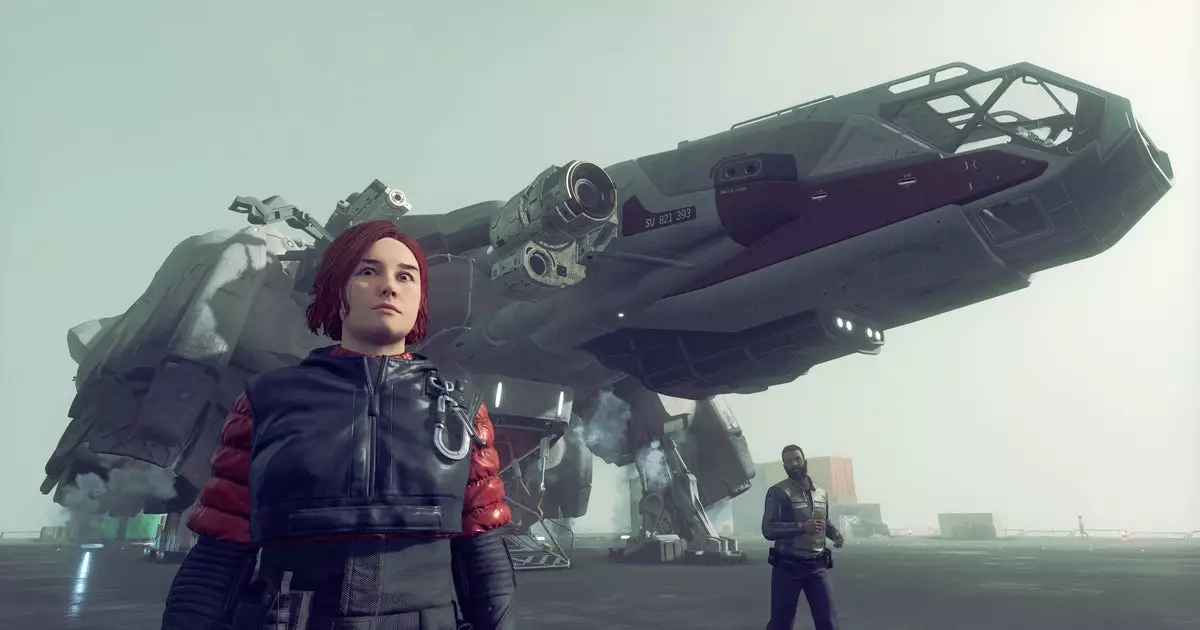Starfield, Bethesda’s ambitious foray into space exploration, has left some gamers feeling underwhelmed. Critics like Alice Bee from Rock Paper Shotgun noted its immense scale but ultimately described it as feeling “small, cold, and unlived in.” The game, despite its vast universe and promising mechanics, may have missed an opportunity to engage players fully, particularly in its tonal approach. A departure from Bethesda’s established grim humor present in titles like Fallout has led some to speculate whether a more visceral experience could have enhanced player immersion.
Recently, former senior artist Dennis Mejillones shared insights that shed light on the creative choices underlying Starfield’s subdued nature. In a discussion on the Kiwi Talkz podcast, he recounted plans for more violent gameplay, including decapitations. However, these notions were stymied by technical limitations. The game’s numerous systems, such as suits and helmets, were challenging to integrate with a bloodier aesthetic. The complexities of ensuring logical interactions in a scientifically grounded universe like Starfield necessitated an approach that, ultimately, favored a more sanitized experience.
While some might lament the absence of gore, it is essential to recognize that the thematic intentions behind Starfield were deliberately executed in a way that prioritizes realism over shock value. Mejillones referenced inspirations from “The Expanse” and “Star Trek,” suggesting an inclination towards a cerebral and subdued atmosphere, as opposed to the more caricatured violence of Fallout.
Another crucial aspect of Starfield’s development was its character creator, which evolved significantly throughout the production process. The emphasis on customization aligns closely with a vision of depth and relatability in creating protagonists. However, this focus may have inadvertently contributed to the game’s overall tonality shift. With a stronger emphasis on character development, adding elements of extreme violence could have been seen as a thematic clash, rather than a coherent extension of player agency.
In games where humor and absurdity reign, a sense of exaggerated violence can feel right at home. In contrast, Starfield’s attempts at a more serious narrative might have felt disharmonious with gore-laden gameplay. This aligns with the notion that thematic consistency is vital for maintaining immersion in expansive game worlds.
Reflecting on the potential impact of gore on player engagement brings us to the attention of underlying motivations while playing. Would a more violent Starfield have added excitement or simply masked deeper issues with the gameplay? Ultimately, while less visceral gameplay may preserve the game’s intended atmospheres, there remains a lingering question: Could it have benefited from a touch more grit? Perhaps not as a substitute for meaningful content, but as a means of revitalizing the experience, adding a splash of unpredictability into an otherwise meticulous universe filled with cold, grey expanses.
In hindsight, while a gory design would not have salvaged Starfield from its perception as a “drag,” it might have produced more visually thrilling moments, enticing players to engage more deeply with its world. A blend of thoughtful storytelling coupled with the adrenaline of unforeseen chaos could create a richer tapestry of exploration and discovery. In the end, Starfield stands as a case study on the importance of thematic choices in game design, where complexity lies not solely in the vastness of space but in the feelings evoked by the universe’s character — or lack thereof.


Leave a Reply